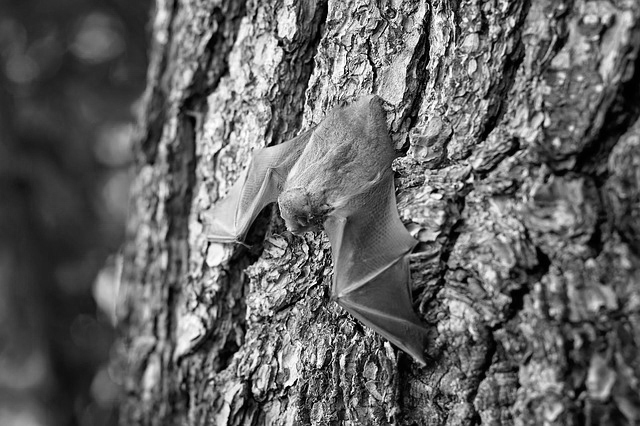The Kind of Damage That Bats Cause in Atlanta, GA
When bats are in small numbers, there is not much of a problem. However, when the colony grows the problems will start and they mostly have to do with a buildup of guano.
If you only have a small colony, it is best to deal with them as soon as possible as they live for a long time and will stay in the same place as long as conditions permit this.
The small colony that you have will grow each year as the female bats give birth to babies each summer and they join the colony.
After a few years, you could have thousands of them and this is when problems start. The problems bats cause can range from minor to life-threatening.
The occasional squeaking and rustling of wings in your chimney, attic or walls can be a bit unsettling and a nuisance.
It is also disturbing to find a bat living in your home and you might be faced with the unpleasant stench of a decaying bat when one dies.
All of these problems can be relatively minor, but they will lead to larger issues in the future.
The Damage and Odors
One of the larger problems you can have with bats in your home is the unpleasant and strong odor of guano which is the droppings that they leave behind.
If you have a colony of bats living in your home, you could have 30 to 40 of them leaving droppings behind on a daily basis.
As this accumulates, the odor will start to spread throughout your home.
Guano has a bad odor, but this is not the only issue as it also carried a threat to your health which can be fatal.
Bats will also cause damage to your home. They are known to chew into the walls and damage the insulation of your home. Wirings will also be damaged which will cause additional problems that you want to avoid.
Disease
The fungus Histoplasma capsulatum is carried in bat guano.
This is important because the spores of this fungus are both microscopic and airborne which allows them to easily get into all parts of your home including the living area.
When inhaled, these spores will cause the disease known as histoplasmosis which is a lung infection.
This infection can clear up on its own, but it can also lead to chronic lung infections which will require medical treatment. If you leave this untreated, the disease can be fatal.
Another health issue that you will face, although rare, is that they could transmit rabies to a human through a bite. The rabies virus can cause inflammation of the brain and will be fatal if it is not treated soon after the infection occurs.
There are actually few bats that carry rabies, but you cannot tell by looking at one.
If you are bitten by them within your home or anywhere else, you need to get treatment for rabies immediately.
What You Should Do About Your Bat Colony
If you hear, see or smell any evidence of bats in your home, you need to start by figuring out how they are entering the house.
You will then have to remove the bats from your home and prevent them from coming back. You need to ensure that your home is sealed off properly so they cannot get inside.
If you have a very warm attic or live in an area which is warm throughout the year, the bats are not going to leave except at night when they need to feed.
If you live in a seasonally colder area, the bats may migrate during the winter to someplace warm. However, they are going to return when the weather changes.
To locate the point or points of entry, you need to look for any evidence of bat urine or guano on the outside of the house.
If there is a lot of guano on a particular wall or one area of the roof, this is the likely entry point. The same is true with urine stains if you see a lot on one area, which is likely where the bats are entering.
You can also watch your home at dusk and wait for them to leave for their nightly hunt. Bats will almost always leave in a large group, so if you are in the right spot you will not miss them.
If you are unable to catch them when exiting, you need to look for other potential entry and exit points. You will generally need a tall ladder for this as bats like heights as they are safe from predators and new room to take flight.
Bats are able to squeeze through openings of 3/8 of an inch, so you need to be meticulous when you look. The most common entry points will be vents, ridge caps and the gaps in fascia boards and eaves.
You should also look at the roof which might allow access for the bats and this could be a broken window, a piece off the siding and missing or broken bricks.
Fumigating and hurting bats is actually illegal. It is also illegal for you to seal the bats out of your home during the season when there might be flightless baby bats in the house.
You will have to get the bats out and seal the entry points, but you have to do this legally and humanely.
It is recommended that you wait until the baby bats have grown and are flying out each night then seal your home off.
You can also wait for migration, if you are in a location that allows for this, and have your home sealed off before the bats return.
To do this legally and in a humane manner, please call us today.

